Chauburji
Chauburji (Punjabi and Urdu: چو برجی, "Four Towers") is Mughal era monument in the city of Lahore, capital of the Pakistani province of Punjab. The Shah Jahan period monument previously acted as a gateway to a large garden, and was built in 1646 C.E.
| چو برجی | |
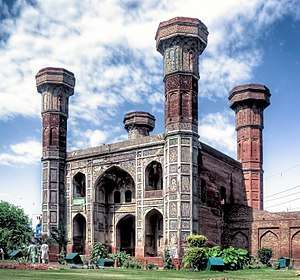 Chauburji once acted as a monumental gateway to a Mughal garden | |
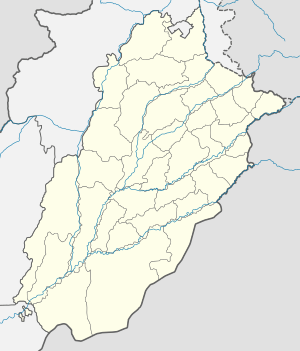 Location in Punjab, Pakistan 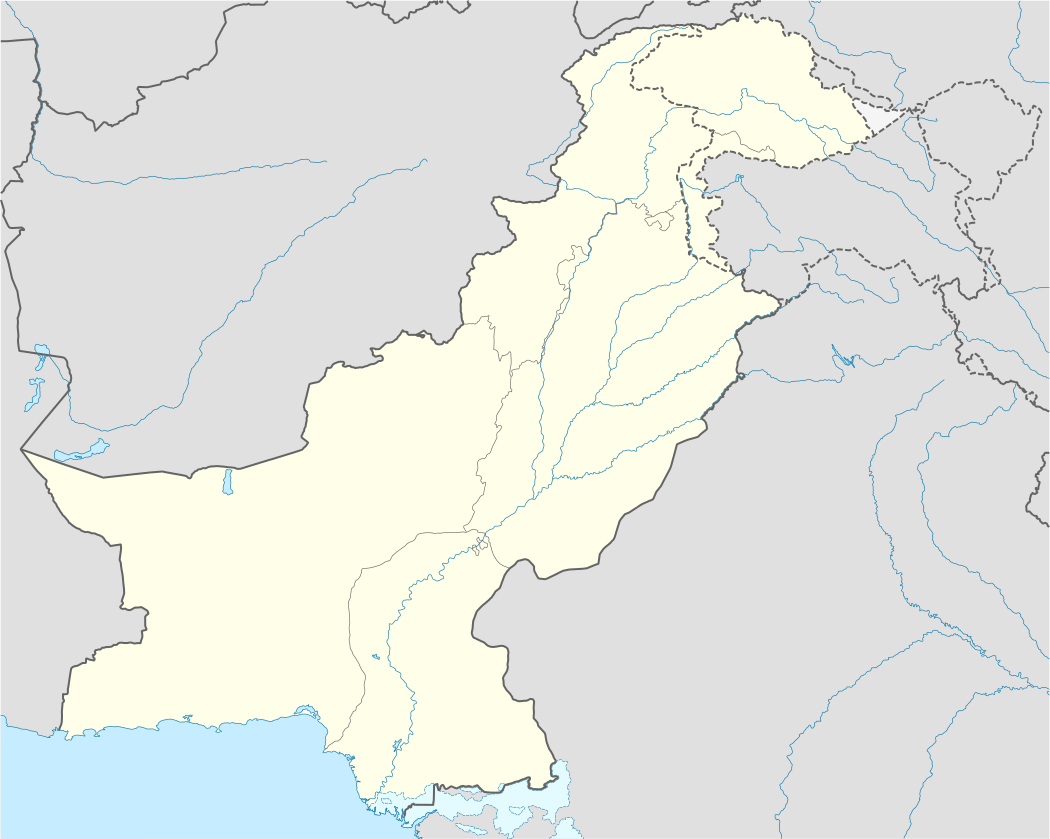 Chauburji (Pakistan) | |
| Coordinates | 31.5540°N 74.3048°E |
|---|---|
| Location | Lahore, Punjab, Pakistan |
| Completion date | 1646 C.E. |
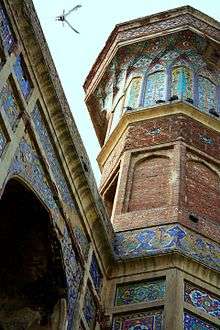
Background
Chauburji is located on Lahore's Multan Road, which leads southwards to Multan, and was the gateway to an extensive garden known to have existed in Mughal times. The name "Chauburji," which translates as "four towers" was likely given by later generations, as the site as seen as a monumental gateway to an extensive garden.[1]
History
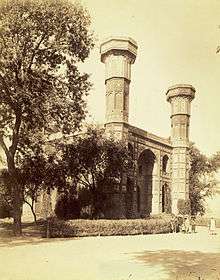
The establishment of this garden is often attributed to Mughal Princess Zeb-un-Nisa, who is believed to be referenced in an inscription naming her "Sahib-e-Zebinda Begam-e-Dauran." The princess was eight years old at the time of construction, so it has been suggested that the inscription may actually be in reference to her aunt, Jahanara Begum, who was a daughter of the Mughal Emperor Shah Jahan.[1]
Lost Mughal garden
The garden for which Chauburji acted as a gateway no longer exists, and the structure is now located in a grassy roundabout at the busy intersection of Lahore's Multan Road, and Bahawalpur Road. The Mughal garden is believed to have extended from Nawankot in the south, and extending towards the Lahore.
Flooding from the Ravi river is believed have destroyed most of the garden during the reign of Emperor Aurangzeb. No traces of the once expansive garden survive aside from the Chauburji gate.[2]
Architecture
Chauburji is built in a syncretic style that blends Mughal architecture, the older Timurid-style from Central Asia, and Perso-Arabic styles from the Middle East. Its distinguishing features are the minarets which greatly widen at the top - a unique feature not present anywhere in the sub-continent. Some, however, believe that there were cupolas upon these minarets which collapsed with the passage of time.
The eastern and western facades of the structure are decorated by two-storey Timurid-style iwans flanked by two levels of alcoves in a style typical of the Shah Jehan period of Mughal architecture. The building was once covered in intricate blue and green kashi kari (or Kashan-style) tile work and frescoes.[2] The iwans are embellished with muqarnas, which were first introduced into the Mughal Empire from Persia with construction of Lahore's Wazir Khan Mosque.
The building's red brickwork is typical of the Muslim buildings of the sub-continent; the doorways and windows running through the interior corridors are examples of the living style that characterised Mughal structures. Although most of the inscriptions on Chauburjia have been lost, on the upper-most part of the construction Ayat-ul-Kursi can be seen in Arabic script in blue and worked in porcelain.
It has been suggested that the Charminar of Hyderabad, India influenced the architecture of Chauburji.[3]
Renovation
During a severe earthquake in 1843, the north-western minaret collapsed and cracks appeared in the central arch. This has however been restored as much as was reasonably possible and the gateway now looks quite as it might have been during the time of its Mughal patroness. The restoration was carried out by the Department of Archeology in the late 1960s.
Conservation
Chauburji is listed on the Protected Heritage Monuments of the Archaeology Department of Punjab.[4]
Impact of Metro construction
The Chauburji monument is situated along the planned route of the Orange Line of the Lahore Metro. Heritage campaigners submitted a petition to the Lahore High Court as the planned metro line will pass close to Chauburji, Shalimar Gardens, and nine other sites in the city in violation of the Punjab Special Premises Ordinance, 1985 and Antiquity Act, 1975.[5] In August 2016, the Court halted construction of the metro within 200 feet of any heritage site, including Chauburji in order to prevent what UNESCO termed as potentially "irreversible damage," were the line to be constructed in its present form.[6] The Chauburji station was originally planned to be underground, but it was changed to an elevated station to comply with the UNESCO regulations.
Gallery
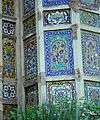 An example of Chauburji's Persian-style tilework.
An example of Chauburji's Persian-style tilework. Embellishments on the Chauburji minaret
Embellishments on the Chauburji minaret Detail on Chauburji minaret
Detail on Chauburji minaret A view of the monument
A view of the monument- A view of Chauburji's minarets with tile work
- Lahore after rainfall
- View of Chauburji
- Chauburji roundabout in 2014
See also
- Islamic Architecture
- Char Minar
References
- "Chauburji Gate". Asian Historical Architecture. Retrieved 23 August 2016.
- "Chauburji". Lahore Sites. Retrieved 23 August 2016.
- "DAWN - Features; November 14, 2001". www.dawn.com. 14 November 2001.
- Pakistan Environmental Protection Agency. "PDF" (PDF). Government of Pakistan. pp. 12, 47, 48. Archived from the original (PDF) on 14 October 2013. Retrieved 6 June 2013.
- "LHC suspended construction of Orange Line Metro Train". Pakistan Tribune. 19 August 2016. Retrieved 23 August 2016.
- "Lahore court backs heritage challenge over metro plans". The Guardian. Retrieved 23 August 2016.
External links
| Wikimedia Commons has media related to Chauburji. |
- Watch Chauburji in 3D by using Google Earth. Modeled by Ahsan Iqbal